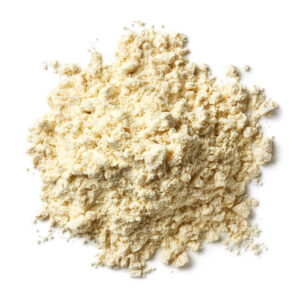WHEY PROTEINS OVERVIEW



Whey protein is one of the two major protein groups found in milk. The main source of whey protein is as a co-product of the cheesemaking process. When the whey is separated from the casein-curd, it can be filtered and dried to create whey protein powder. Whey protein is highly researched and has been found to provide essential building blocks for muscle recovery and synthesis. This benefit makes it renowned for being a staple in the diet of bodybuilders. However, it is now becoming a key part of mainstreams diets as well, given the unrivaled benefits of high-quality whey proteins.
Dairy proteins are unique in their ability to provide all nine essential amino acids. Whey protein is also fast-digesting, and the human body can easily absorb it making it useful for quick and effective recovery. Whey protein is also particularly high in the branched-chain amino acids (BCAAs), especially leucine. This unique BCAA has been shown to trigger muscle protein synthesis, the process by which the body builds and generates new muscle fibers, which is key for everyone of all ages – not just those wanting to get bigger muscles. The benefits of whey protein go beyond its ability to support muscle tissue; it has been shown to increase satiety, support weight management, manage blood glucose – both in healthy and pre-diabetic subjects – and even help endurance athletes run faster.
Whey protein concentrate (WPC) is made by a filtration and drying process. First, whey, which comes from the cheesemaking process, is brought into a plant and pasteurized. The whey is then run through cold microfiltration that concentrates the protein from the other constituents present in the whey. Once the protein is concentrated, the liquid is sent to a dryer to create a high protein powder.


Whey protein isolate (WPI) is made is made through a series of filtration and drying processes. First, whey, which comes from the cheesemaking process, is brought into a plant and pasteurized. The liquid is then run through cold microfiltration that separates the fat from the other components. Following microfiltration, the liquid is processed through ultrafiltration to concentrate the protein further and remove lactose and minerals. This creates a highly purified whey protein isolate. Once the protein is isolated, the liquid is sent to a dryer to create a high protein powder.
Whey protein hydrolysate (WPH) is made via enzymatic hydrolysis of the protein peptides. Whey protein hydrolysate can be made from whey protein concentrate or whey protein isolate. After whey is filtered to make whey protein concentrate or isolate, the liquid concentrate or isolate, respectively, is pumped to a hydrolysis-tank. In this tank, enzymes are added, and specific conditions are held to efficiently hydrolyze the proteins. Once the desired degree of hydrolysis (DH) is reached, the protein concentrate is heated to deactivate the enzymes. This liquid whey protein hydrolysate is then sent to a dryer and finished into packaging.
